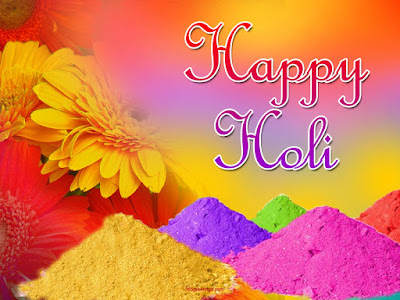कुंभमेला, जिसे दुनिया का सबसे बड़ा धार्मिक आयोजन कहा जाता है, यूनेस्को की अमूर्त सांस्कृतिक विरासत मानवता की प्रतिनिधि सूची में इसका उल्लेख मिलता है।
अभी हरिद्वार में कुंभ मेला चल रहा है।
कोविड 19 के चलते इस वर्ष 2021 में कुम्भ का स्वरूप भी बदल गया है। उचित दुरी एवं मास्क का प्रयोग अनिवार्य है ताकि यह कोरोना वाइरस ज्यादा फैले नहीं। यात्रियों को भी कुम्भ में आने से पहले कोरोना की नेगेटिव रिपोर्ट लानी अनिवार्य है।
कुम्भ काल में अमावस्या तिथि (अमावस्या दिवस)आदि कुछ महत्वपूर्ण तिथियों में गंगा के पवित्र जल में स्नान अनुष्ठान को शाही स्नान कहा जाता है।
अमावस्या तिथि मुख्य रूप से पूर्वजों के लिए समर्पित है। लोग अपने मृतक रिश्तेदारों को श्राद्ध और तर्पण अनुष्ठान करके उनका आशीर्वाद पाने और पितृ दोष (पितरों के श्राप) से छुटकारा पाने के लिए तर्पण करते हैं। यह माना जाता है कि पवित्र जल में डुबकी लगाने से, वह पापों से छुटकारा पा सकता है ।
इसके अलावा, कुंभ मेले के दौरान, तपस्वियों (साधुओं, संतों और अन्य पवित्र पुरुषों) ने अपने शाही स्नान अनुष्ठानों के लिए गंगा किनारे एकत्र होते हैं।
सोमवती अमावस्या की पौराणिक कथा:
पौराणिक कथा के अनुसार, एक गरीब ब्राह्मण परिवार था.उस परिवार में पति-पत्नी के अलावा एक पुत्री भी थी.वह पुत्री धीरे-धीरे बड़ी होने लगी। उस पुत्री में समय और बढ़ती उम्र के साथ सभी स्त्रियोचित गुणों का विकास हो रहा था.वह लड़की सुंदर, संस्कारवान एवं गुणवान थी.किंतु गरीब होने के कारण उसका विवाह नहीं हो पा रहा था।
एक दिन उस ब्राह्मण के घर एक साधु महाराज पधारें. वो उस कन्या के सेवाभाव से काफी प्रसन्न हुए.कन्या को लंबी आयु का आशीर्वाद देते हुए साधु ने कहा कि इस कन्या के हथेली में विवाह योग्य रेखा नहीं है।
तब ब्राह्मण दम्पति ने साधु से उपाय पूछा, कि कन्या ऐसा क्या करें कि उसके हाथ में विवाह योग बन जाए.साधु ने कुछ देर विचार करने के बाद अपनी अंतर्दृष्टि से ध्यान करके बताया कि कुछ दूरी पर एक गांव में सोना नाम की धोबिन जाति की एक महिला अपने बेटे और बहू के साथ रहती है, जो बहुत ही आचार-विचार और संस्कार संपन्न तथा पति परायण है।
यदि यह कन्या उसकी सेवा करे और वह महिला इसकी शादी में अपने मांग का सिंदूर लगा दें, उसके बाद इस कन्या का विवाह हो तो इस कन्या का वैधव्य योग मिट सकता है। साधु ने यह भी बताया कि वह महिला कहीं आती-जाती नहीं है।
यह बात सुनकर ब्राह्मणी ने अपनी बेटी से धोबिन की सेवा करने की बात कही.अगल दिन कन्या प्रात: काल ही उठ कर सोना धोबिन के घर जाकर, साफ-सफाई और अन्य सारे करके अपने घर वापस आ जाती।
एक दिन सोना धोबिन अपनी बहू से पूछती है कि- तुम तो सुबह ही उठकर सारे काम कर लेती हो और पता भी नहीं चलता.बहू ने कहा- मां जी, मैंने तो सोचा कि आप ही सुबह उठकर सारे काम खुद ही खत्म कर लेती हैं.मैं तो देर से उठती हूं.इस पर दोनों सास-बहू निगरानी करने लगी कि कौन है जो सुबह ही घर का सारा काम करके चला जाता है।
कई दिनों के बाद धोबिन ने देखा कि एक कन्या मुंह अंधेरे घर में आती है और सारे काम करने के बाद चली जाती है। जब वह जाने लगी तो सोना धोबिन उसके पैरों पर गिर पड़ी, पूछने लगी कि आप कौन है और इस तरह छुपकर मेरे घर की चाकरी क्यों करती हैं?
तब कन्या ने साधु द्बारा कही गई सारी बात बताई.सोना धोबिन पति परायण थी, उसमें तेज था.वह तैयार हो गई.सोना धोबिन के पति थोड़ा अस्वस्थ थे। उसने अपनी बहू से अपने लौट आने तक घर पर ही रहने को कहा।
सोना धोबिन ने जैसे ही अपने मांग का सिन्दूर उस कन्या की मांग में लगाया, उसका पति मर गया.उसे इस बात का पता चल गया.वह घर से निराजल ही चली थी, यह सोचकर की रास्ते में कहीं पीपल का पेड़ मिलेगा तो उसे भंवरी देकर और उसकी परिक्रमा करके ही जल ग्रहण करेगी।
उस दिन सोमवती अमावस्या थी। ब्राह्मण के घर मिले पूए-पकवान की जगह उसने ईंट के टुकड़ों से 108 बार भंवरी देकर 108 बार पीपल के पेड़ की परिक्रमा की और उसके बाद जल ग्रहण किया। ऐसा करते ही उसके पति के मुर्दा शरीर में वापस जान आ गई। धोबिन का पति वापस जीवित हो उठा। यह सोमवती अमावस्या का माहात्म्य है जो लोक में प्रचलित है।






